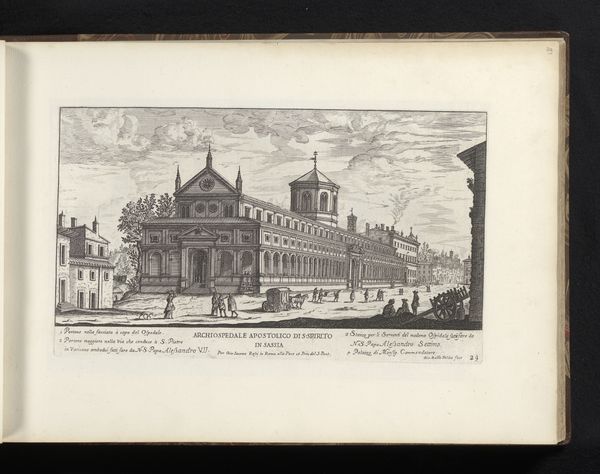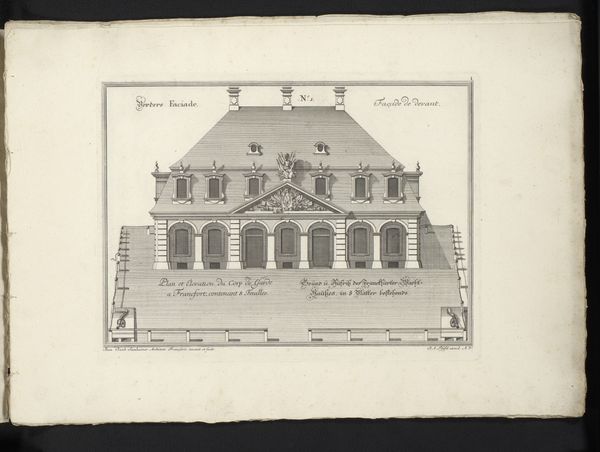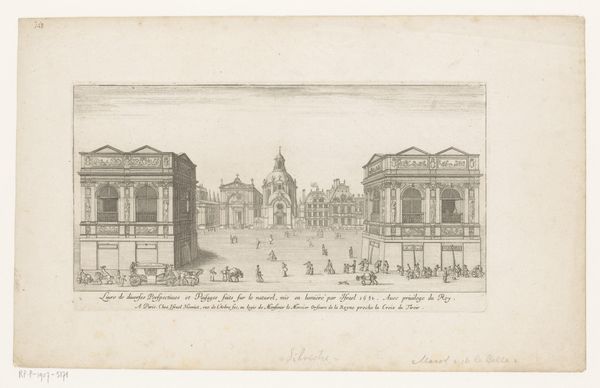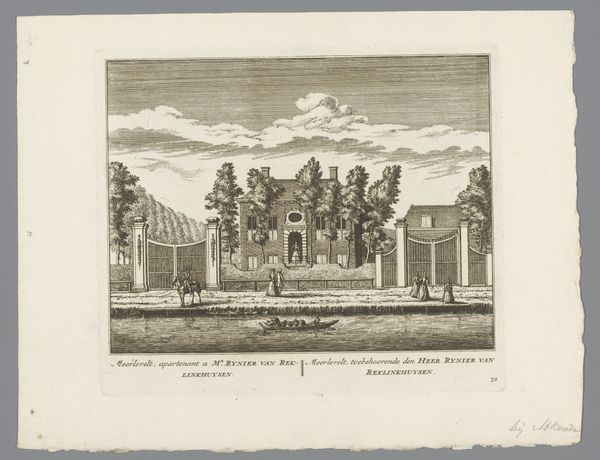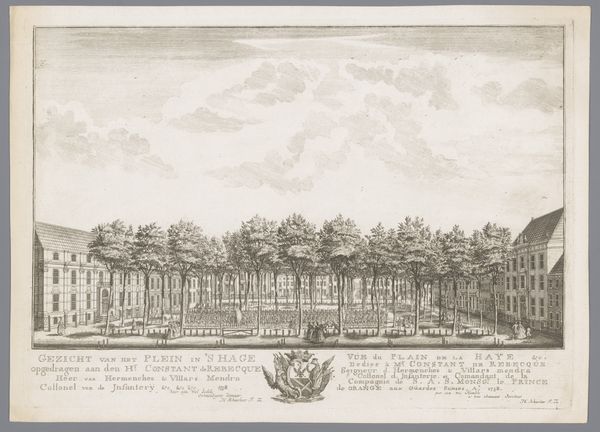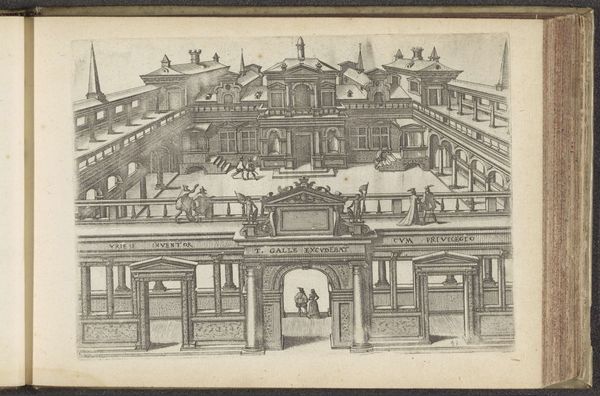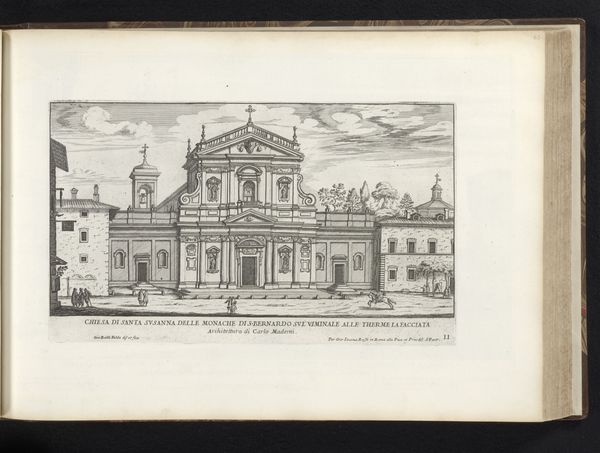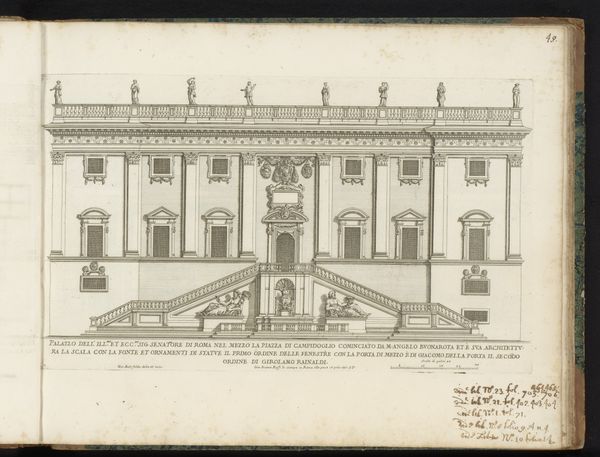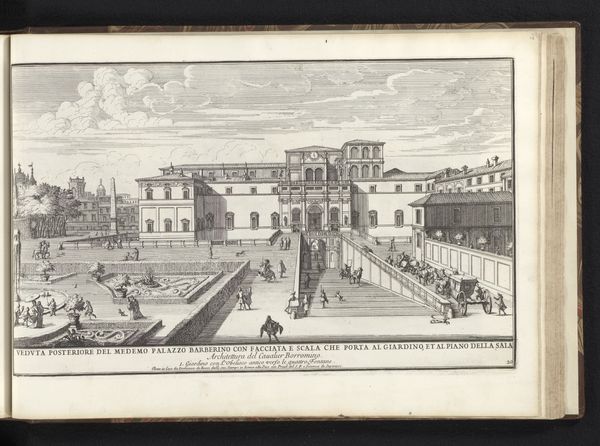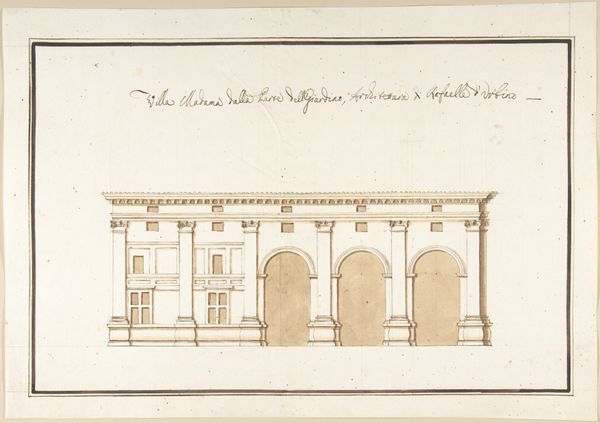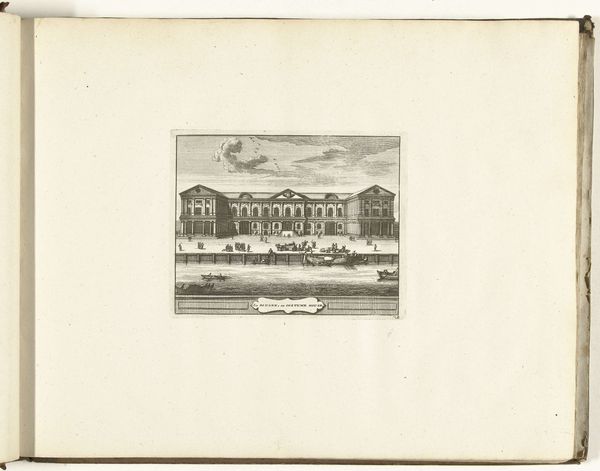
drawing, print, architecture
#
drawing
# print
#
cityscape
#
architecture
Dimensions: sheet: 5 1/4 x 9 5/8 in. (13.3 x 24.4 cm) sheet: 6 x 10 in. (15.2 x 25.4 cm)
Copyright: Public Domain
This drawing was made by Stephen Riou in the 18th century, with pen and black ink, over graphite. It depicts a design for a museum or repository, an edifice with galleries, a center hall and pavilions on the wings, intended to preserve works of sculpture and painting. This was the era of the Enlightenment, marked by a growing interest in science, reason, and the classification of knowledge. In this context, museums emerged as public institutions, aiming to educate and inspire the public. The design features a grand, symmetrical facade, reflecting classical architectural principles of balance and order. However, the figures in the foreground, perhaps workers or visitors, remind us that buildings don’t exist on their own. They are physical manifestations of people’s ideas, labor, and social interactions. How does this design shape the types of experiences and interactions people might have within its walls? Consider this design not only as a structure, but also as a reflection of the values, ambitions, and social hierarchies of its time.
Comments
No comments
Be the first to comment and join the conversation on the ultimate creative platform.
